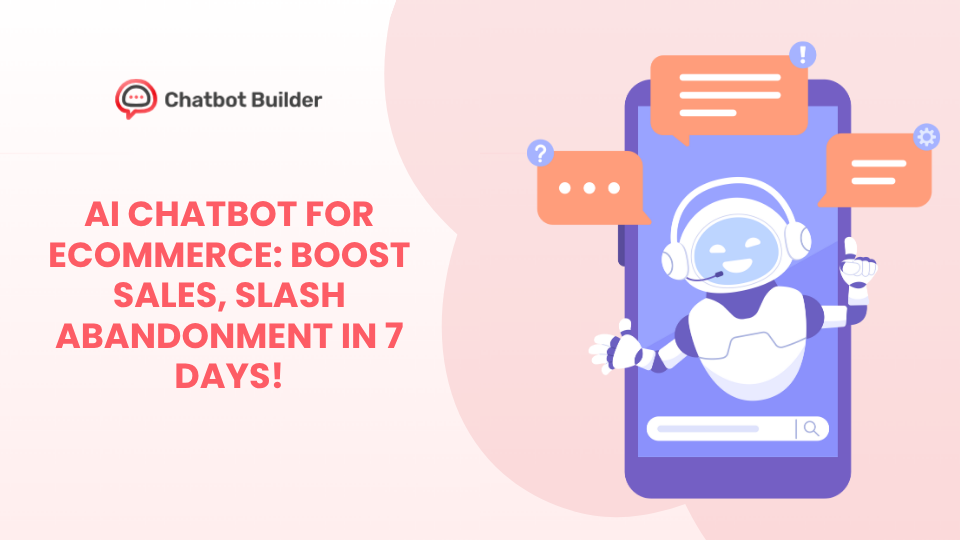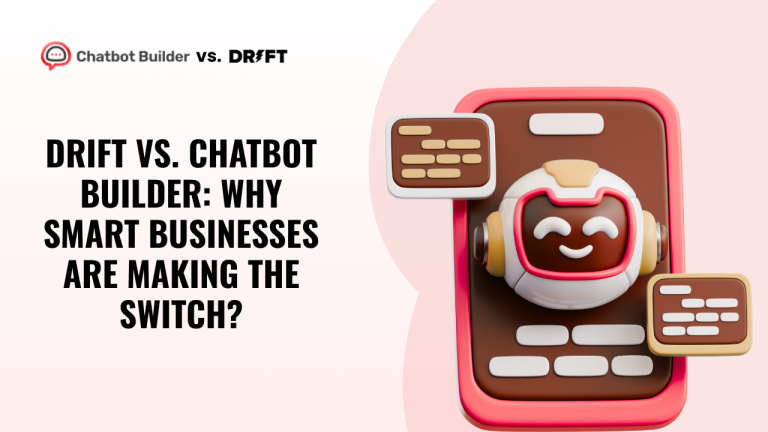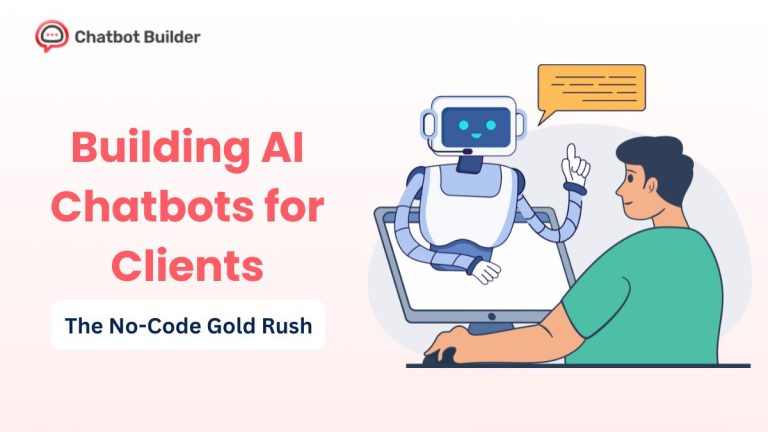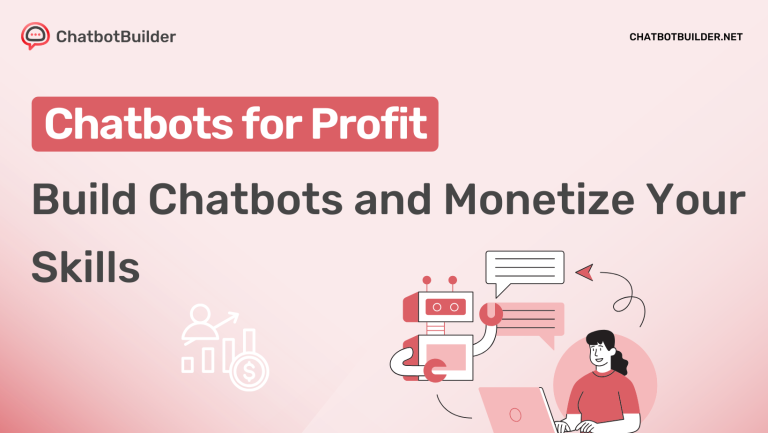You’re losing money right now.
Every minute your online store operates without intelligent automation, potential customers are bouncing, carts are getting abandoned, and competitors are eating your lunch.
Here’s what nobody tells you: the difference between a thriving online store and one that barely breaks even often comes down to response time. Not product quality. Not pricing. Response time.
When someone lands on your store at 2 AM with a question about shipping, what happens? They leave. When a customer can’t figure out your return policy, what do they do? They bounce to Amazon. When someone hesitates at checkout because of a sizing question, where does that sale go? Gone.
That’s where an AI chatbot for ecommerce changes everything.
Why Your Store Bleeds Money Without Automation
Let’s talk numbers because feelings don’t pay bills.
The average cart abandonment rate across ecommerce sits at 70%. Seven out of ten people who put items into a virtual shopping cart never complete the purchase. Think about it: You’ve done all of the hard work in getting them interested, and they disappear.
Why? According to Baymard Institute research, 50% of shoppers abandon carts because they have questions that go unanswered. They want to know about shipping costs, delivery times, product specifications, or return policies. If they can’t find instantaneous answers, they bail.
Here is the brutal truth: hiring enough customer service representatives to cover 24/7 support costs $150,000 plus annually for a small team. That’s before benefits, training, or management overhead. Most small to mid-sized stores can’t afford that. So they choose between terrible coverage and terrible margins.
But an AI chatbot for ecommerce costs a fraction of that and never sleeps, never takes breaks, and handles unlimited conversations simultaneously.
The 7-Day Transformation Plan
I’m going to walk you through exactly how to deploy a chatbot that starts generating results within one week. No fluff. No theory. Just what works.
Days 1-2: Set Up Your Foundation
Begin by mapping your customer’s most frequent questions. Take a look at your customer service emails over the last 90 days. What keeps coming up?
For most stores, it’s the same 15-20 questions on repeat:
- Shipping times and costs
- Return and refund policies
- Product sizing and specifications
- Order tracking
- Payment methods
- Discount codes
Your AI chatbot for ecommerce needs to nail these basics before anything fancy. Program responses that are clear and direct. No corporate speak. If someone asks, “When will my order arrive?”, the bot should respond like a helpful store employee, not a legal document.
Configure your chatbot to capture email addresses right before conversations close. Even if the bot can’t answer everything perfectly, at least you have a lead to follow up on.
Days 3-4: Deploy Strategic Interventions
Most of the store owners slap a chatbot in the corner and hope for the best. Wrong approach.
Program your bot to trigger based on specific behaviors:
Exit-intent popups: When someone moves their mouse to close the tab, your bot appears with “Wait! Need help with anything before you go?” This alone can recover 10-15% of bouncing visitors.
Abandoned cart rescue: If someone adds something to their shopping cart but doesn’t check out in 90 seconds, your bot asks, “Questions about shipping or returns?”
Time on page triggers: Someone’s been staring at a product page for 45 seconds? They’re thinking. Your bot asks, “Want to know more about this product?”
High-value cart alerts: The bot says, “I see you’re making a big order!” when the value in the cart exceeds $200.
Configure your AI chatbot for ecommerce to recognize when it needs human backup. If a customer asks three questions the bot can’t handle, it should immediately offer to connect them with your team and capture their contact info.
Days 5-6: Personalization and Upselling
Now we get tactical about revenue.
Your bot should track conversation history and browsing behavior. If someone is asking about running shoes, the bot will suggest related products: “Based on what you’re looking at, customers also love these moisture-wicking socks.”
The key, however, is not to be pushy. The bot should feel helpful, not salesy. Frame suggestions as solving problems, not pushing inventory.
Use your ecommerce AI chatbot to implement smart discounting: if someone is on the fence at checkout, for example, a bot can offer a small incentive such as: “I can apply a 10% discount code to help close this order.”
Test different discount thresholds. Sometimes a free shipping offer works better than percentage discounts. Let data decide.
Day 7: Measure and Optimize
Pull your metrics. You want to track:
- Conversion rate (how many visitors engage)
- Resolution rate (how many questions the bot answers without human help)
- Cart recovery rate (abandoned carts saved)
- Average order value (AOV) for bot-assisted purchases vs. regular purchases
- Customer satisfaction scores
Most stores see a 15-25% reduction in cart abandonment within the first week of deploying an AI chatbot for ecommerce. If your numbers are lower, your bot probably needs better training on common questions or more strategic trigger timing.
The ChatbotBuilder.net Advantage
Most chatbot platforms are either too complicated or too simple. Either you need a developer to configure basic responses, or you get a dummy bot that can’t handle anything beyond “What are your hours?”
Chatbotbuilder.net hits the sweet spot. Their platform is built specifically for ecommerce stores that want results without hiring a tech team.
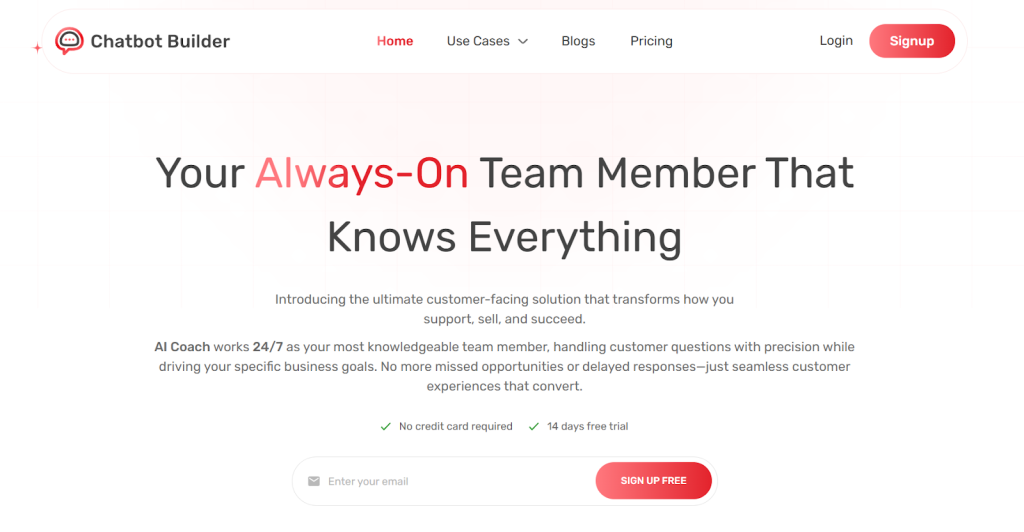
What makes them different:
No coding required: With their visual builder, you can map conversation flows in minutes by dragging and dropping. If you can use PowerPoint, you can build a sophisticated AI chatbot for e-commerce.
Smart integrations: It directly integrates with Shopify, WooCommerce, BigCommerce, and major payment processors. Your bot can fetch real-time inventory information, order status, and customer history.
A/B testing built in: Test different conversation approaches and what drives more sales. Ever wondered if offering free shipping or a 10% discount works better? The platform tracks it automatically.
Analytics that matter: Most chatbot platforms give you vanity metrics like “messages sent.” chatbotbuilder.net shows you what you actually care about: revenue per conversation, cart recovery rate, and ROI.
Their pricing scales with your business. The support team actually knows ecommerce. When you have questions, you’re talking to people who understand conversion optimization, not just chatbot technology.
Advanced Tactics for Maximum Impact
Nail the basics, then make these power moves that separate the decent results from the absolutely exceptional:
Engage after purchase: In most cases, stores drop off their customers immediately after checkout. Your bot can ask each buyer how they like the product 2-3 days after delivery. This builds relationships and generates reviews.
Reactivation campaigns: When a past customer hasn’t ordered in 60 days, the bot reaches out with personalized recommendations based on previous purchases.
VIP customer treatment: Set up your AI ecommerce chatbot to identify high-value customers and give them white-glove treatment. “I see you’re one of our best customers. Let me personally make sure this order is perfect.”
Multi-language support: If you ship internationally, your bot should automatically detect language preference and respond accordingly. This alone can increase international sales by 30-40%.
Voice of customer data: Your bot conversations are a goldmine. Review chat logs monthly to spot patterns. If ten people ask the same question your product pages don’t answer, update your site.
Common Mistakes That Kill Chatbot ROI
Don’t make the bot too clever too fast. Start simple and expand. Stores that try to build an AI that answers everything end up with a bot that answers nothing well.
Don’t hide the bot. Make it prominent. Some stores worry about being “too pushy,” so they bury the chat widget. Wrong move. If people don’t see it, they can’t use it.
Don’t forget your mobile. Over 60% of ecommerce traffic is mobile. Your AI chatbot for ecommerce needs to work flawlessly on phones and tablets.
Don’t set and forget. Review bot performance weekly for the first month, then monthly after that. Customer questions change seasonally. Your bot needs to adapt.
Don’t skip the human handoff. When the bot can’t help, make it easy to reach a real person. Nothing frustrates customers more than being trapped with an unhelpful bot.
What Happens After Week One
The real magic starts after your initial setup. As your AI chatbot for ecommerce handles more conversations, it learns patterns. You’ll identify new opportunities for automation and personalization.
Month two is about refinement. You’ll improve response quality, add new conversation paths, and optimize trigger timing. Most stores see cart abandonment drop another 5-10% in month two.
By month three, your bot should be handling 60-80% of routine customer service inquiries without human intervention. Your team focuses on complex issues and relationship building while the bot grinds through repetitive questions.
The compounding effect is real. Each month, your bot gets smarter, your team gets more efficient, and your revenue increases while costs stay flat or decrease.
The Bottom Line on AI Chatbots for Ecommerce
You have two choices.
Choice one: Keep operating the same way, watching 70% of carts get abandoned, paying too much for customer service, and wondering why competitors are growing faster.
Choice two: Implement an AI chatbot for ecommerce this week and start recovering lost sales immediately.
The technology exists. The ROI is proven. The only question is whether you’re willing to change.
Start with the 7-day plan. Get the basics working. Measure results. Then optimize and expand.
Your store can’t afford to operate without this technology anymore. Your competitors already figured that out.
Conclusion
Right now, as you are reading this, you are missing opportunities.
Someone just landed on your product page with a sizing question. They’ll wait about 30 seconds before bouncing. Another visitor added three items to their cart, but couldn’t find your shipping policy. They’re about to abandon. A third customer wants to know if you ship to Canada, but can’t find the answer. Gone.
Each of these situations represents real money walking out the door. Multiply that by dozens or hundreds of daily visitors, and you’re looking at thousands in lost monthly revenue.
Head over to ChatBot Builder and sign up for a free trial. You can have a working bot deployed in your store by tonight. The platform walks you through setup step-by-step, and their ecommerce templates mean you’re not starting from scratch.
It’ll take you less time to set this up than your weekly team meeting. The possible upside is transforming your conversion rates and customer experience.
Stop reading about what could work and implement what does work. Sign up now, follow the 7-day plan outlined above, and watch your abandonment rates drop while your revenue climbs.
Your competitors aren’t waiting. Why are you?
Frequently Asked Questions
No. A good e-commerce AI chatbot handles repetitive questions-which consist of about 70-80% of inquiries-and frees your team to work on more complex issues, building relationships, and giving high-value customers the attention they deserve.
With platforms like ChatbotBuilder.net, basic setup takes 2-4 hours. Getting it fully optimized with all triggers and personalization takes about a week. You can start seeing results immediately once the bot is live.
Yes, but results vary. Stores with clear product information, defined shipping policies, and common customer questions see the biggest wins. If your business model requires deep consultative selling, you’ll still benefit from a bot handling basic questions, but you’ll need more human involvement in the sales process.
Absolutely. Modern platforms, such as ChatbotBuilder.net, are built for a non-technical audience. If you can operate basic software, then you can build and manage an e-commerce AI chatbot. Most platforms offer templates and drag-and-drop builders that require zero coding knowledge.







